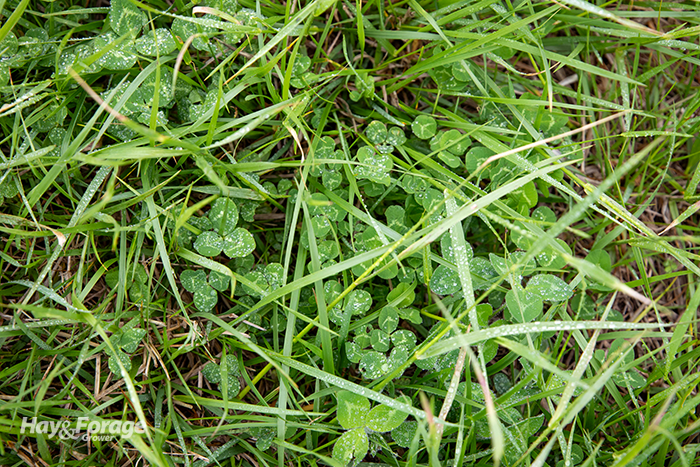It’s time to think frost seeding |
| By Mike Rankin, Senior Editor |
|
|
 One of the great advantages of a pasture-based feeding system is that tillage is rarely or never required. That said, even the best of pastures occasionally need freshened up with an influx of legumes. In many cases, this is accomplished by frost seeding. The University of Missouri’s Carson Roberts is a big proponent of frost seeding for a number of reasons. “Adding diversity to a pasture can make it more productive than growing tall fescue alone,” the state’s extension forage specialist explains. “Diversity can also aid in reducing or diluting the effects of fescue toxicity, improve the nutritive value of forage, increase animal weight gain, and enhance soil health.” Roberts notes that research at the Cornett Research Farm in northern Missouri shows that fescue pastures are more productive when legumes are in the mixture. He says that maintaining legumes like red clover in a pasture improves the quality and forage yield of pastures in the springtime and also boosts the quality and forage yield in stockpiled pastures later in the growing season. Although legumes can be introduced to pastures by drilling seeds into the sod once the growing season begins, frost seeding much earlier in the year on frozen ground is an alternative approach that has proven to be successful. Seeds work their way into the soil and germinate as the ground freezes and thaws between winter and spring. “Frost seeding is effective because freeze-thaw cycles cause soil surface movement that increases seed-to-soil contact,” Roberts says. The window for frost seeding will vary depending on your location and the weather conditions in a given year. For Roberts’ state, the window can be as early as late January in southern Missouri through late February in the northern part of the state. Follow the recipe Broadcasting seed on frozen ground carries more inherent risk than drilling seed directly into the soil, but the odds for success can be improved with some advanced planning and following a few basic recommendations. Roberts notes that legumes are less tolerant of soil acidity than most grass species. Establishment is most successful if a pasture’s soil pH is 6 or higher, but he adds that some legumes like annual lespedeza can tolerate a pH as low as 5. The forage specialist also warns against broadcasting seed onto fluffy, windblown snow or when soils are thawed and muddy. Frozen ground helps to support equipment and minimize soil compaction. Finally, Roberts emphasizes the importance of selecting the correct legume species to frost seed. He recommends using annual lespedeza, red clover, or white clover. Other species such as alfalfa, birdsfoot trefoil, hairy vetch, and sunn hemp are typically sown at other times of the year or direct drilled. |
